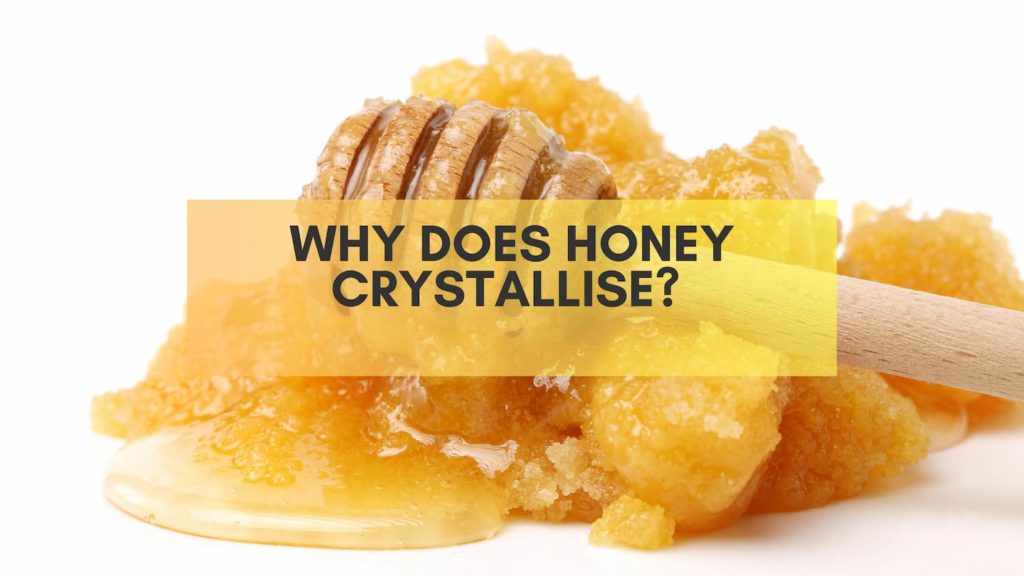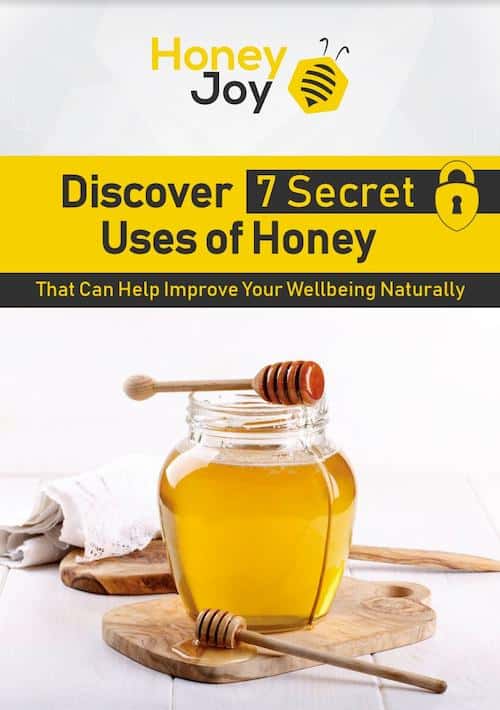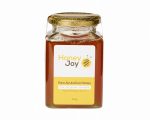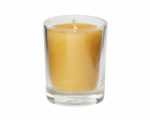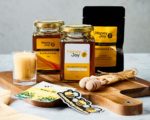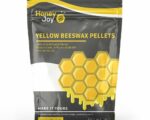Why does honey crystallize? Does it have something to do with pollen (made by bees)?
The fact is that honey crystallizes naturally. There is nothing we can do to stop that completely, but we can postpone it (or reverse the whole process, which we will talk about later in the article).
But, before we begin, let me remind you to check out some delicious honey we have on offer in our shop.
Key Takeaways
- Crystallized honey is safe to eat, but only if we are talking about natural honey.
- Glucose and fructose are the main reason why honey crystallizes.
- Raw honey has more antioxidants (and general health benefits) when compared to other types of honey.
Crystallized Honey
Honey is made by bees, and they do so by using flower nectar. Flower nectar is a watery solution that is made up of different types of sugars (bees love sugar).
There are a couple of reasons that can lead to the crystallization process.
They range from improper storage (like leaving your honey jar out in the open, not closing it properly…) to the natural process that includes glucose and fructose (sugars that every type of honey contains).
Some types of honey crystallize completely, while others will crystallize partially.
So, before I tell you how to properly store honey (to avoid crystallization), let me first tell you about the process that leads to crystallization.
Glucose and Fructose
Honey can be described as a highly concentrated sugar solution. More than 70% of honey are sugars (glucose and fructose) and less than 20% of it is water (that’s where the “highly concentrated” part comes from).
So, what does all of that mean? Well, it means (simply put) that honey has more sugars than it should naturally be able to hold.
The crystallization process happens, when glucose and fructose bind together to form tiny crystals (that’s why it’s called crystallized honey).
Depending on the balance between glucose and fructose (as well as other substances that are contained in honey) some types of honey will crystallize faster than others.
Crystallization is a naturally occurring process that can be “postponed” by keeping your glass jar of honey in a proper manner (properly stored).
But, even if you don’t do that, don’t worry! If the honey that you are using is really natural, then even when crystallized it’s safe to eat (some people like it crunchy).
Now, if you are not a fan of crystallized honey (you don’t like the extra crunchiness), don’t fret, there is a way to reverse the process, and get yourself the liquid honey you (presumably) bought in the first place. How? Well, keep reading to get your answer.
How to Decrystallize Honey?
When your honey jar does crystallize, there are ways to combat that and return it to the previous form (without crystals).
Some people like crystallized honey and find it easier to spread (on toast for example).
If you are not a fan of crystallized honey and are thinking about buying another jar, I’ve got some good news for you, you don’t have to do that. Why?
Because there is a way (actually a couple of ways) to decrystallize honey and make it smooth again.
Put Your Honey Jar in Warm Water
Your honey has crystallized and you are unsure what to do? You are thinking about buying a new jar, but it feels like a waste, as you still have a lot of honey left?
Here’s a simple “trick”, that you can do to restore your honey into a more liquid form than it had before crystallization (some people prefer liquid honey to crystallized one).
First, warm up some water (how you do that it’s up to you). After you’ve done heating water, get yourself a large bowl that can fit the container you keep your honey in.
Put your container filled with honey inside the bowl and pour the hot water around it. And that’s it. Now, you just have to wait for those little crystals to break up.
And, how long you’ll wait will depend on the amount of honey and the level to which it was crystallized. If it’s taking too long, you can add more hot water, to speed up the process (it won’t happen quickly, presumably you will have to wait a couple of minutes).
This is by far the safest and easiest solution when it comes to decrystallizing your honey.
Using a Microwave
This method requires you to have a microwave (really? How’d you figure that?). But, to ensure you do this method safely (meaning it does not lead to an explosion) there are some things you need to keep in mind.
Before you start heating the honey, you need to make sure your honey is in a microwave-safe container, and that the lid is removed.
Ceramics and glass are usually the safest options. If you are using a plastic container, make sure it’s marked as safe to use in a microwave.
The next thing you should do is microwave the honey for around 30 seconds, on medium heat. This method will lead to decrystallization much more quickly than the previously mentioned one.
The only downside is, that with this method (if you are not careful) you can accidentally boil or burn your honey (which will, in turn, make it less delicious, and will impact its taste).
Most plastic containers that honey comes in should not be used in a microwave, so be extremely mindful about that, before trying out this method.
FAQ
Is Crystallized Honey Safe to Consume?
The only difference between crystallized honey and the one that is not crystallized is the texture (which can lead some people to believe the taste is different as well, but that is not always the case).
What does that mean? It means that crystallized honey is still safe to consume.
The only reason why you shouldn’t eat it is if you don’t like the texture or extra crunchiness (that crystals made up of glucose and fructose are responsible for).
We’ve talked about a couple of ways you can get rid of the crystals (decrystallize the honey).
It’s completely natural for honey to crystallize.
What Is Raw Honey?
Raw honey is the type of honey that does not go through the process of pasteurization (exposing substances to high temperatures in order to remove impurities) [1].
Raw honey is filled with antioxidants and is widely considered to be the type of honey that has the most health benefits.
Raw honey is as close to honey that can be found in the hive. It’s natural and does not contain any added sugars (and, if you ask me, it’s the most delicious type of honey that bees can make!).
Raw honey is amazing (for real! I mean it!), but it does contain bee pollen, to which some people are allergic [2].
If you are allergic to this type of pollen (or bees themselves) you should talk to your doctor before eating this type of honey (and probably any other type of honey, like unfiltered honey).
What Is Pure Honey?
Pure honey should mean that the container of honey you are buying only, contains honey (no added sugar, or artificial sweeteners).
That’s not always the case (sadly) as some manufacturers like to misrepresent their products.
How To Store Honey?
There are a couple of things you should keep in mind if you want to store your honey properly.
First, make sure that your honey container is in a cool and dry place. For proper storage, the temperature should not exceed the standard room temperature of around 18C.
Keep your container away from heat, moisture and direct exposure to sunlight. Don’t store your honey in metal containers as it may lead to oxidation (which can affect the taste and texture of honey).
The Bottom Line
Some types of honey contain pollen (made by bees), which some people can be allergic to. Be sure to talk to your doctor before consuming any type of honey (if you are allergic to bees).
Raw honey is as close to honey that is “straight from the hive” as you can get. It has more antioxidants than any other type of honey.
Sources
- https://www.britannica.com/technology/pasteurization
- https://www.ncbi.nlm.nih.gov/pmc/articles/PMC4377380/
